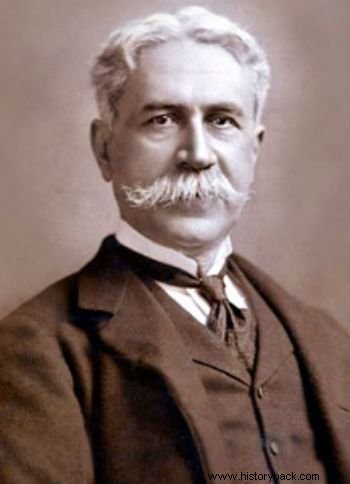The Abolitionism is the movement that emerged at the end of the 18th century, in Europe, with the aim of putting an end to slavery.
In Brazil, the ideal emerged with force in the second half of the 19th century and contributed to the end of slavery in the country.
Popular Movements
There were many popular movements that had an abolitionist character, such as the Conjuração Baiana or Revolta dos Alfaiates (1798), which took place in Bahia.
This movement was formed mainly by blacks and liberal professionals, from tailors to shoemakers. They sought to end Portuguese rule and, consequently, put an end to slave labor in the country.
Likewise, the Malês Revolt is part of the slaves' struggle to obtain better conditions of treatment and freedom.
The Abolitionists
Abolitionists were opposed to the slave regime and were individuals from different social classes. They ranged from religious, republican, political elite, white intellectuals, freedmen, among others. Women also played a big role in this struggle.
One of the most prominent abolitionists was the diplomat and historian Joaquim Nabuco (1849-1910), founder of the “Brazilian Academy of Letters” and articulator of anti-slavery ideals.
Thus, Nabuco was the main parliamentary representative of the abolitionists for a decade (1878 to 1888) when he fought for the end of slavery.

The journalist and political activist José do Patrocínio (1853-1905), collaborated with the campaign for the abolition of slavery in Brazil and, alongside Nabuco, founded the “Brazilian Society Against Slavery” in 1880.
In addition to them, Brazilian abolitionists deserve to be highlighted:André Rebouças (1838-1898), Rui Barbosa (1849-1923), Aristides Lobo (1838-1896), Luis Gama (1830-1882), João Clapp (1840-1902) and Castro Alves (1847-1871).
Note that several abolitionist leaders were Freemasons, such as José do Patrocínio and Joaquim Nabuco.
See also:Brazilian Black PersonalitiesActuation
The abolitionist movement was plural and had several ways of expressing its support for the end of slavery. Usually, they were organized in clubs and Abolitionist Societies that had male and female sections.
From there, they organized fundraisers to buy the manumission of slaves, sent petitions to the government demanding abolitionist laws or proposed changes to the projects that were being processed in the Chamber.
Some printed their own newspapers and promoted events in order to spread to the greatest number of people the reasons why slavery should end.
See also:Abolition of Slavery in BrazilAbolitionist Laws
In Brazil, abolition took place gradually and through laws that gradually benefited slaves:
- Eusébio de Queirós Law (1850):which put an end to the slave trade carried on “slave ships”.
- Law of the Free Womb (1871):which, from that year onwards, freed children born to slave mothers.
- Law of Sexagenarians (1885):which benefited slaves over 65 years old.
- Golden Law :enacted on May 13, 1888, by Princess Isabel, abolished slave labor in Brazil, freeing about 700,000 slaves who were still in the country.
Abolitionism in the World
Other countries, before Brazil, went through the process of abolitionism.
In this sense, it is worth mentioning Denmark, the first country in the world to abolish slavery, in 1792, a law that only came into force in 1803.
Portugal
There are controversies about Portugal being considered the pioneer country of Abolitionism, since in 1761, it puts an end to slavery in the country, a law sanctioned by the Minister Marquês de Pombal (1699-1782).
However, the Portuguese empire continued to transport slaves on slave ships to the Portuguese colonies and the definitive abolition took place only in 1869.
Spain
Before African slavery, Spain benefited from Muslim slave labor especially for domestic purposes. However, the country was home to around 58,000 enslaved people at the end of the 16th century.
Only in the 19th century, with the restoration of King Ferdinand VII, did he ban the slave trade in 1817. However, Cuba and Puerto Rico, the colonies that most depended on slave labor, only abolished slavery in 1873 and 1886, respectively.
France
After the French Revolution (1789), France decides to abolish slavery in the country in 1794.
In 1821 the Society of Christian Morals was founded in Paris and, a year later, the Committees for the Abolition of Traffic and Slavery were created.
However, pressured by the landowners of the colonies, Napoleon Bonaparte decrees the return of slavery in these domains.
It was not until 1848 that the slave regime disappeared from the French colonial empire
United Kingdom

At the beginning of the 19th century, several British intellectuals, many linked to the Anglican Church, were mobilizing against the trade in human beings.
The United Kingdom through the “Act against the Slave Trade”, in English, Slave Trade Act (1807), prohibited the slave trade.
Later the “Slavery Abolition Act” (Slavery Abolition Act ), of 1833, definitively freed slaves throughout the British empire.
Note that England was one of the countries to pressure the Portuguese government to end slavery in its colonies, including Brazil. That kind of pressure would continue after independence.
Spain would also suffer all kinds of threats to do the same from England, as well as its former colonies that were conquering their autonomy.
United States
Some northern states abolished slavery between 1789 and 1830. However, the freedom of slaves was only declared in the year 1863, through the law enacted by President Abraham Lincoln (1809-1865) that displeased the southern states. Lincoln's attitude would lead the country into Civil War.
See also:End the African Slave TradeCuriosities
- The anthem "Amazing Grace" was composed in 1773 by John Newton, a slave trader who repented, converted and spent the rest of his life fighting for the end of slavery in England. The song is so popular that even members of the racist Ku Klux Klan use it in their ceremonies.
- Camellias were the symbol of abolitionism in Rio de Janeiro because they were cultivated by former slaves from Quilombo do Leblon.
Read more :
- Slave Ships
- Black Consciousness
- Slavery in Brazil
